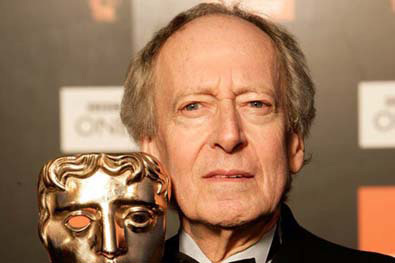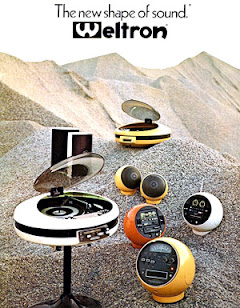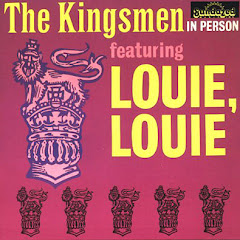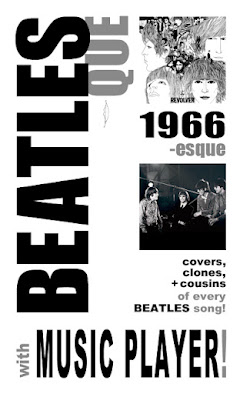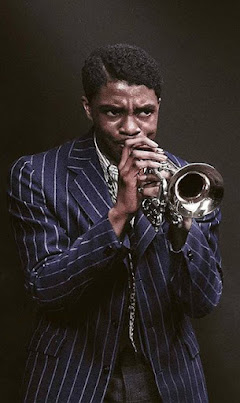Culture is interaction and reaction. In-breeding is just a dead-end. Growth is new food, new genes, new thought, renewing knew. Some say pure musics were destroyed when others heard each other through record and radio. Nonsense, they enhanced each other. It's not infection, it's mutation, not excerpt but exchange. Diversity is truth; if any one is just like everyone, then nobody is anybody. Know yourself and find more to know. "Tear down the ghettos in your mind." Can you get to that? Well, the thing about everything is it's everywhere anyway. Reality is too big for anybody to be too small. "Everything is everything."
Woodstock was every music of the century together, sidelong and unbridled. The half-million saw themselves as one, a tribe. The Money saw them as a demographic. FM radio will divert these combined sounds into different channels, dividing and conquering the rhythm nation: Bass='black', Guitar='white'. Everyday people still sleepwalk through this chessboard Matrix today. But, for awhile in this golden period, everyone was On The One. The crosscurrents of funky musics were flood waters in the early '70's; in this swirl, all eddies met and flowed. That sonic whirlpool of thump bass and acid guitar and electric sitar and phased horns and church organs and electronic blips and jazz abstract and tablas and congas and revolution chants and trippy rants was Miles was Carlos was Shankar was Traffic was Azteca was Zeppelin was Funkadelic was Dr. John was funk music. It's a family affair.
Think of Funk as a DNA helix; one spiral side is James, and the parallel twister is Sly. Each is very different from the other, but the combo of them creates something more.
James put the strengths of southern Soul, gutbucket Blues, swinging Jazz, and Mambo attack into pop form. Better, he then re-imagined it all as tight percussion with each instrument alternating roles: guitar and bass might play the rhythms while horns and drums played free; turning melody into groove he could vamp loose. The funky Groove. He exceeded Georgia poverty to become King of the Apollo and crash the Pop charts. But he was working within the strangling constrictions of racism in his North/South tour circuit that defined life as black or white. He was beating it sonically, as people worldwide swung to the groove. But in the day to day, he was always navigating that sad gulf between mental suspicion and physical segregation.
Sly (born in Denton, Texas, raised in the Bay Area) and Jimi (Seattle) were from more radically cosmopolitan areas. Mass immigration on the Left Coast exposed them to a dizzying world of influences. Surrounded by people from every persuasion who, in the 50's, were experiencing as many assimilation pains as they were helped forge their pan-cultural outlook as well as their tastes. Sly turned mid-60's radio outside-in slipping in garage rock, comedy, and classical records as a soul DJ. Meanwhile he produced all the Beat and Garage rock bands of the Autumn label, including the classic "Laugh Laugh" and "Just a Little" by The Beau Brummels, and the original version of The Great Society's "Somebody To Love" before Grace Slick took it to Jefferson Airplane. He and his friend Billy Preston even sported Beatle haircuts and suits at the time. When he joined his sister, brother, and friends as The Family Stone, they personified the wide-open outlook he intended to live. He absorbs James' groove in context with a lot of other influences that James hasn't tried; rock guitar, jazz delirium, hedonism, The Beatles, free love, acid.
The two men are brothers in terms of rhythm, flair, and ambition. But what differentiates James from Sly and Jimi is background experience, cultural outlook, and generational philosophy. James is rooted in show biz discipline: choreography, suits, hierarchy, presentation, tour circuits, 45 singles, male bands. He creates those constraints as a survival discipline, but becomes punk rock when he sweats, flings off his jacket, and gets funky. James is a proud Black Man in the dawn of the Civil Rights movement. As such he is pushing an envelope that he is always keenly aware of. But Sly lives like that envelope doesn't exist. He has the discipline to hold a group, but every restraint after that is gone: male and female, wild clothes, experimental albums, communal festivals instead of circuit clubs. The barriers invented about race or gender are yesterday's yawn. While Lyn Collins and Marva Whitney are front women with the male JB's backing them, Sister Rose Stone and Cynthia Robinson are full-on band members who might jump up and run out into the crowd singing. Sly is coming from an entirely different place in location, age, temperament, and style.
James' funky groove and Sly's rocky soul are the intertwined pillars that copulate all Funk music. There will be soulstremental bands and vocal groups and front singers who hew to James' groove. There will be hedonists and fusionists and free radicals who explore Sly's Funk to its zenith. There will be straddlers, dilettantes, leapfrogs, and inspired splicers all in and out. But the spirit of these two men twines through everything to come. It was Sly who kickstarted the 70's with the most perfect, quintessential Funk song of them all...
1970:
by Tym Stevens
Hear the unlimited Playlist here.)
1) THANK YOU (FALETTINME BE MICE ELF AGIN), Sly & The Family Stone, 1970. That bass. Larry Graham made up for a lack of drummer in his early years by plucking the chords while thumping hard on the strings. The 'pluck'n'thump' method hit this wax and the dance floors like an earthquake. From now on, the Bass was the lead, slamming with the muscular ferocity of Hendrix. It made you strut, which made it perfect for the age of empowerment. The times are hard, sociopolitical, and kicking, and this new Funk music becomes the soundtrack for the emboldened power of a new generation that wants to seize the future. This song, and the later album to follow, THERE'S A RIOT GOIN' ON, are the genesis of modern Funk as we know it.
2) (GET UP, I FEEL LIKE BEING A) SEX MACHINE, James Brown & The JB's, '70. There was a martial quality to James' movement. One aspect was fining band members if their shoes were scuffed or a beat missed. When his band quit on him, JB yanked in a couple of green kids from Cincinnati he'd heard. 16-year-old bassist Bootsy Collins was thrown in the studio, James counted 4, and here it is. Perfect. Larry Graham and our man Bootsy would prove to be the most important Funk bassists of all time.
3) BALL OF CONFUSION, The Temptations, '70. Producer Norman Whitfield and The Temps describe the new cultural war; it is a collision of idealism and repression, with the youth challenging the status quo. Everyone was on the spot as to where they stood and everyone was looking for answers. The lyric "The Beatles' new record's a gas" is a nod to the pied pipers of the young. To many, they were the example of possiblility. Their songs will be continually covered by legions in every style as tribute to the merging of great melody and great possibility.
4) FREEDOM, Jimi Hendrix, '70. Jimi's hardcharging rock always had a funky sway under it. From him come disciples like Black Merda, Funkadelic, Buddy Miles Express, The Politicians, and Mandrill, and of course compatriots like Led Zeppelin, Rare Earth, The James Gang, and Santana.
5) I GOT A THING, YOU GOT A THING, EVERYBODY GOT A THING, Funkadelic, '70. Meanwhile, there was George Clinton. Trying to do the Motown-suit-thing as The Parliaments earlier, they had lost their name and their money. Then they heard Sly and Jimi and it was all over. They became both with Funkadelic. Shaved heads, bed sheets, Halloween costumes, diapers, druids, surreal lyrics, and extremely rude stage behavior erupted out of Detroit, scaring most folks away. Borrowing Vanilla Fudge's mega-gear one night just put everything over the top. Leading the charge is the searing beauty of guitarist Eddie Hazel, the criminally unsung successor to Hendrix. Running partner Billy "Bass" Nelson and he trade vocals.
6) FUNKY WOMAN, Parliament, '70. Determined to escape label control and pigeonholing, Funkadelic also recorded as the equally-bent Parliament, flinging out whole other shades of unhinged. Classical fugues, 'hokey'-tonk country, tripping Gospel, and little funk fireballs like this one. The twisted humor and warped wordplay of Clinton kicks in as hard as Billy and Eddie do.
7) THE GRUNT, The JB's, '70. When hornmeisters Maceo Parker and Fred Wesley returned from their walk-out, they joined Bootsy and brother Phelps in side albums of their own. (That peeling squeal from Maceo invented Public Enemy in ten seconds.) Variations would be Fred Wesley & The JB's, The James Brown Soul Train, Maceo & The Macks, The Last Word, and The First Family.
8) THE CHANGELING, The Doors, '70. The riders of the storm do another take on James, by way of the "Tramp" riff. Robbie Kreiger channels Jimmy Nolan's chicken scratch through Jimi's wah-wah. It personifies how 70's Funk guitar would emerge from this merging. (Where would Rufus be without it?)
9) LIGHT MY FIRE, Ananda Shankar, '70. The nephew of Ravi Shankar fuses rock with traditional Indian classical sitar music to celebrate the future. Since George Harrison helped popularize Indian music, the sitar had made its way into many pop and soul songs. Miles Davis is bringing sitar and tablas into his fusion brew.
10) A MESSAGE FROM THE SOUL SISTERS, Vicki Anderson, '70. James Brown always had great soul women he championed. Sugar Pie DeSanto, Yvonne Fair, and Tammi Terrell in the early days, and now Vicki, Lyn Collins, and Marva Whitney in the funk age. Say it loud, I'm female and I'm proud!
11) JOY, Stevie Wonder, '70. Coming of age in body and mind, Stevie kicks the doors open with his funky keys. He and Billy Preston will be the first to use clavinet, an early Classical piano noted for its mechanical sting, and the Moog synthesizer, influenced by the rising Electronic Music futurism scene.
12) JONES COMING DOWN, The Last Poets, '70. Spoken word poetry -from Langston Hughes to the Beat Generation- continued to mutate. It went intensely personal and political by 1970. The Last Poets (including Lightnin' Rod and Kain), The Watts Prophets, Gil Scott-Heron, Nikki Giovanni, Amiri Baraka, and more described the hard challenges of becoming a full person in a tumultuous time. With jazz flow over pounding beats, this is the cradle of Rap music.
13) HOPE YOU'RE FEELING BETTER, Santana, '70. With its funky lurch and blaring distortion, this monster gallops on pummeled congas. Carlos would collude with Sly's rhythm section, drummer Greg Errico and Larry Graham, soon afterward.
14) ROCK'n'ROLL STEW, Traffic, '70. Names can deceive coz this is a funk song. Led by Steve Winwood, this song is actually sung by percussionist Jim Capaldi.
15) MAGGIE, Redbone, '70. The counterculture embraced roots to regrow the future. These Native Americans likewise revibed tribal, brewing funky blues with their drums and ritual ceremonies. This song has cajun influence in the words and story. Later, they would have a massive hit with "Come And Get Your Love".
16) MAGIC MOUNTAIN, Eric Burdon & War, '70. Adrift after The Animals, Eric and his Danish harpmaster Lee Oskar stumbled across a funky band in L.A. pumping out Latin Funk. He rechristened them War and their powerhouse live shows tore up clubs around the world. War and Sly were reportedly waiting at a club for Jimi when they were told he had just died. A long time friend, it broke Eric's heart.
17) I JUST WANT TO CELEBRATE, Rare Earth, '70. Motown launched their rock label with this band and named it after them. That's Pete Rivera booming the mike while he bashes the drums. They were recommended by Dennis Coffey, who had brought the acid guitar into the Funk Brothers house band.
18) YOUR ACE FROM OUTER SPACE, U-Roy, '70. Jamaican MC's started talking over their records. This 'toasting' from stars like U-Roy and Winston Williams joins spoken word as the genesis of Rap. (DJ Kool Herc was from Jamaica, Grandmaster Flash from Barbados.)
19) FUNKY, The Chambers Brothers, '70. Spanish flamenco guitar lilts this raw, conga-driven classic that lives up to its name. It was later sampled by A Tribe Called Quest as "I Left My Wallet In El Segundo".
1971:
by Tym Stevens
Hear the unlimited Playlist here.)
20) RIGHT ON, Marvin Gaye, '71. In a crisis of conscience, Marvin bucked Motown's machine and wrestled with his inner conflicts on the boldly political concept album, "What's Goin' On". It is wall-to-wall brilliance, now considered one of the best albums ever made. "For the soul that takes pride in his god and himself and everyone else/ Let me say to you, Right on!" Look for more protest from Stevie Wonder, Donnie Hathaway, and Gil Scott-Heron.
21) RIGHT OFF, Miles Davis, '71. Sonny Sharrock brings noise rock into the fusion. Miles is the pioneer of a movement that includes Herbie Hancock, Mahavishnu (John McLaughlin), Return To Forever (Chick Corea), Frank Zappa & The Mothers of Invention, Billy Cobham, and The Headhunters.
22) WHAT SO NEVER THE DANCE, The Houseguests, '71. Bootsy got fired from The JB's when acid turned his bass into a serpent onstage and he lost it. He plied his luck with friends in this wild outfit, only to be compared everywhere they went to some band called Funkadelic.
23) THANK YOU FOR TALKIN' TO ME, AFRICA, Sly & The Family Stone, '71. On the RIOT album, the sunshine optimism and brassy highs suddenly slowed down. A new slunky blues strode in, rumbling on that thumping bass. The horns drag muted, and the lyrics become existential, harsh, paranoid, and very politically charged. Sly had changed midstream, and with him came rebel street music. The cover, with only its undulating flag with a black field of sunflowers and no text, summed the ambiguity.
24) "FELA IN PERFORMANCE", Fela Ransome Kuti & Africa 70. While visiting the U.S., Fela was radicalized by the Black Panthers and James Brown. He returned to Nigeria to pioneer AfroBeat, a marathon relentless Funk that fought the literal revolution for independence. (Thank you for talkin' to me, America.) He often jammed with his friend Ginger Baker of Cream. The Afro-rock band Osibisa, Manu Dibango, Brian Eno and The Talking Heads, son Femi Kuti, and Antibalas are his legacy.
25) SLIPPING INTO DARKNESS, War, '71. Eric left but Lee stayed. Everyone traded lead vocals and Papa "Dee" Allan spanked the congas good. The bass is the undersung B.B. Dickerson.
26) ROCK STEADY, Aretha Franklin, '71. Backed by the crack King Curtis band, ReRe runs some rings on James. With her belting passion, confessional vulnerability, and mercurial style, Aretha was the modern soul template from which come Chaka Khan (Rufus), Joyce Kennedy (Mother's Finest), Ruth Copeland, Betty Wright, Betty Davis, and myriad more. Having said that, their other mother was Tina Turner; the sassy brass, horny prowl, and rock swagger all come from her.
27) YOUR LOVE BEEN SO GOOD TO ME, Ruth Copeland & Funkadelic, '71. Ruth was a Welsh waif with a towering voice who wrote songs for and performed with Parliament on their first album. After a falling out, the backing band Funkadelic (with Hazel, Nelson, and Worrell) eloped with her for two albums and toured with Sly & The Family Stone. As feminism rose, there were many soul-rock sisters like Fanny, Birtha, Merry Clayton, Sweet Linda Divine (Linda Tillery), and the funk army Isis. If you haven't heard of them, blame The Man.
28) DRIVING WHEEL, Al Green, '71. When The MG's dissolved, the momentum of Stax Records shifted over to Hi Records. Memphis soul was ruled by Al Green and Ann Peebles on the grooves of the Hodges Brothers, and drummers Howard Grimes and Al Jackson, Jr. (The MGs).
29) SOMEBODY'S WATCHING YOU, Little Sister, '71. Sly produces his sis Vet on this remake of a Family Stone song. The word is that Sly plays all the instruments, getting that hard dry bass sound by plugging directly into the mixing board. Listen close and you can hear him whisper the words along with her.
30) THEME FROM SHAFT, Isaac Hayes, '71. The Stax mack earned an Oscar for his score of soul jazz and funky rock. (That's Charles Pitts of The Bo-Keys scratching the catalytic guitar.) The film "Shaft" actually pulled MGM out of bankruptcy, and made Funk music widescreen and mainstream. Screens exploded with urban reality cop dramas with funky rock soundtracks based on Isaac's template. The term "blaxploitation" is weak so I'll call it the Blaxplosion instead. But in the wide view, "Shaft", "Serpico", "Superfly", "The French Connection", and "The Godfathers" are of a piece; a society taking a hard look at morals, ethics, and justice.
31) MUSHROOM, Can, '71. The progressive German band with a Japanese singer stripped rock convention back to soundscapes of intense rhythm, becoming in essence here an alien take on James Brown. The relentless pound was upped by Neu! soon after. There are many examples of avant-garde funk included here like Annette Peacock, Captain Beefheart, Yoko Ono, and Roxy Music.
32) FORZA G, Ennio Morricone, '71. Italian soundtracks were hip as hell, and Ennio Morricone, Piero Umiliani, Nora Orlandi, and Piero Piccioni are a secret mine of funky gold. Germans Manfred Hubler and Siegfried Schwab stirred up the succulent "Vampyros Lesbos" score. More international funk by Jean-Jacques Perrey, Janco Nilovic, Ananda Shankar, Cymande, and more follows.
33) DE NOITE NA CAMA, Doris Monteiro, '71. Brazil got funk right away, and here are some examples from Monteiro, Valle, and Chaves, and Veloso, Gil, Candido, Donato, and others elsewhere.
34) FAMILY AFFAIR, Sly & The Family Stone, '71. Sly uses the Rhythm King, the first drum machine. Parliament would later credit theirs as "The Man In the Box". Brian Eno (Roxy Music) became obsessed with that hard, focused sound, along with the beats of Neu!, James, and Fela.
1972:
35) FREDDIE'S DEAD, Curtis Mayfield, '72. With his crucial SUPERFLY soundtrack, Curtis ridicules the pimp-as-hero delusion in a score that underlines the parasitic hypocrisy of that cop-out. Johnny Pate fleshed it out with wonderful string arrangements.
36) DO IT AGAIN, Steely Dan, '72. FM radio tells you it's rock but it's a funk song. As always, listen before you look. The same will go for cuts here by The Doobie Brothers, ZZ Top, Elton John, Joe Cocker, Edgar Winter Group, and more.
Also Glam Rock, which was huge in this year, was boogie blues played tight and tough. Boogie rock and Funk shook the parties and the hips of all. "Me I funk, but I don't care/ I ain't no square with my corkscrew hair," sang Marc Bolan of T-Rex.
37) SCORPIO, Dennis Coffey, '72. He brought acid guitar into Motown, discovered Rare Earth, and made blistering funk of his own. This record was one of Afrika Bambaataa's secret weapons in the early days of Rap and has become a sampling standard.
38) SUPERSTITION, Stevie Wonder, '72. While The Family Stone edges into dis-funk-tional, the new prince steps in. Stevie takes control of his career and the entire mid-70's with a spate of LPs that redefine everything. Prime in this is use of the T.O.N.T.O., ten synthesizers hooked to one keyboard which he sculpts new textures and synthfunk with. Here though it's the clavinet, which he makes the Funk keys.
39) USE ME, Bill Withers, '72. Bill had an amazing run of classic songs that everybody covers, and this is one to savor.
40) OUTA-SPACE, Billy Preston, '72. Between fortifying The Stones and former Beatles, Billy hit the charts with his own. This ushers in space funk, with Herbie Hancock and Funkadelic's genius Bernie Worrell on his rocket trail.
41) BLACK SATIN, Miles Davis, '72. Miles almost made an album with Sly and Jimi, but reportedly fears of an affair between his wife Betty and Jimi (completely unfounded) axed it and her. Still, their music fired his startling reinvention through Fusion. Here, tight bass strobes under Indian tablas and acid sitar, punctuated by hands, bells, and secretive organ. Miles distorts his trumpet with a wah-wah pedal among this Martian morse code. This edgy clang will invent the punk-funk bands that rise in the late 70's-early 80's.
42) I'LL TAKE YOU THERE, The Staple Singers, '72. Gospel first family on Stax lays out the truth for the ages. Mavis swaggers while Pops blueses up the strings. (Compare the opening to the reggae song, "The Liquidator" by Harry J All-Stars, 1969.)
43) THINK, The Soul Searchers, '72. This was originally by The "5" Royales in the 50's, but made famous by James Brown. Chuck Brown (no relation) and The Soul Searchers put the Latin Funk spin on it here. Chuck was coranated the Godfather of Go-Go funk music in the 80's.
1973:
by Tym Stevens
Hear the unlimited Playlist here.)
44) ME AND BABY BROTHER, War, '73. This fists-first bruiser is built on the end vamp of Sly's "Stand". It sounds like good times lyrically until the chilling line, "they shot my baby brother/ and they called it law and order". From MLK to the counterculture, it was too often clear that the police were misused as martial law against any dissent that threatened The Man's self-interests.
45) DOO DOO DOO DOO (HEARTBREAKER), The Rolling Stones, '73. Mick decries drug and police abuse in the inner city while Billy Preston clav's it with fierce verve. The toughest funk is political and the sound embodies the people's defiance.
46) I'M THE SLIME, Frank Zappa & The Mothers of Invention, '73. The court jester mimes The Man and his tool, the stupestrobe known as TV and the media. George Duke rattles the keys.
47) IF I'M IN LUCK, I MIGHT GET PICKED UP, Betty Davis, '73. Please rise up standing for the Queen of Funk. There is no one badder, more intense, more rocking, more erotic than her majesty, Betty Mabry Davis. Here she's attended by Family Stone rhythmatists, Larry Graham and Greg Errico (who produced).
48) WATERMELON MAN, Herbie Hancock, '73. After a stint of alien tribal funk, he hit it perfect with his band The Headhunters. The precise fusion of jazz, funk, and world music made it the biggest jazz seller of the times.
49) KEEP ON TRUCKIN', Eddie Kendricks, '73. Former Temptation makes his move gritty but smooth on this stomper. "In old Temptation's rain, I'm duckin'... ".
50) GET UP STAND UP, The Wailers, '73. Taking their cue from the bass line of War's "Slipping Into Darkness", the rasta rebels launch a peoples revolution for higher consciousness. All hail Bob Marley, Peter Tosh, Bunny Wailer, and Rita Marley, Jah!
51) MY THANG, James Brown, '73. James was thrown by the musical shift since Sly. He paid so much attention to what others were doing it drove bandleader Fred Wesley to exasperation. Here, JB calls in a stopgap funk band to revamp "It's Your Thing" to really great result.
52) THE CRUNGE, Led Zeppelin, '73. Drummer John Bonham idolized James. The Zep slides a funky stride here, Jimmy Page scratching like Nolan with just enough of his own inimitable surge-and-swagger. Plant vamps the famous JB que for the song's bridge, finally punchlining it with a flustered high-tone retort.
53) I CAN'T STAND THE RAIN, Ann Peebles, '73. Memphis soul cohort of Al Green steals the show with this amazingly arranged gem. The radical use of percussion on the opening was an eye-opener. Her bluesy Mahalia didn't hurt things either.
54) HIGHER GROUND, Stevie Wonder, '73. In this swampy grind, Stevie uplifts everyone, inheriting the utopian mantle that Sly is abdicating as excesses tear him down. (Some folks still think this is a Chili Peppers song, even though they namecheck Stevie twice in their cover.)
1974:
55) APACHE, The Incredible Bongo Band, '74. If you don't recognize this song as the source of most Rap beats ever made, you must be visiting the Earth. This is the wellspring, tapped initially by Bambaataa for all the first hiphop parties in the Bronx.
56) EASIN' IN, Edwin Starr, '74. Early 70's black cinema became a showcase for many artists. From the afro-funk of Osibisa to the deft jazz stylings of Marvin Gaye's "Trouble Man", it elevated profiles while enlarging palettes. Edwin slid this lesser-known classic into "Hell Up In Harlem".
57) FOR THE LOVE OF MONEY, The O'Jays, '74. The Philly International label supplanted Motown in the mid-70's, elongating their string pop into lush dance grooves that warmed the floor for impending disco. Still tight and topical here, The O'Jays benefit from the stellar production of its opening, a harbinger of the Producer and Remix culture of the 80's.
58) ONLY SO MUCH OIL IN THE GROUND, Tower of Power, '74. The 60's as we know it is essentially 1967 to 1974. An idealistic youth saw their chosen leader (RFK) pushed aside by a bad one (Nixon); all the social money went instead to a crooked War-for-profit, which divided the nation left and right; a groundswell of ecology concerns rose; the Prez used 'law-and-order' as a mandate for suppression of public dissent; oil prices exploded and resentment of the Middle East grew; poverty, race, and gender issues were the deep topic; and the White House was tarnished by endless corruption scandals. Tell me if this sounds familiar to any of you...
59) BREAKIN' BREAD, Fred & The New JB's, '74. Fred Wesley in essence was The JB's. He decoded James' unique signals of grunts, hums, and organ stabs to arrange the songs that James is most known for. (That's no knock on the Godfather of Soul, but let's give the player some.) Here he steps to the mike with this hilarious homage to country cooking and comely cousins. Soon he and Maceo will defect to the upstart Parliament as the Horny Horns.
60) DO THE FOOTBALL, Isis, '74. An all-female funkrock band led by guitarist/singer Carol MacDonald, with lead vocals on this slammer by bassist Stella Bass. If you haven't heard of them, you should punch your radio in its robot mouth.
61) PICK UP THE PIECES, Average White Band, '74. Their cheeky name was a slap at radio from a Scottish band raised on soul records and James. While they had the vocal chops to carry many classic hits, strangely enough their first and greatest was this instrumental insurgent. Nolan guitar and Fred & Maceo horns all the way.
62) SANFORD AND SON, Quincy Jones, '74. Jazz in the 60's and Funk in the 70's hipped film scores to the modern urban reality. In the wake of "Shaft", film and TV were funked to the brim. Here's one legendary example at its full length. But -beyond crime films and the Blaxplosion- let's not forget "The Streets of San Francisco", "Fat Albert", "Sesame Street" cartoons, and more.
63) AFRICA, The Meters, '74. After years of brilliant 45's only musicians bought, the Meters started to get some props. They backed Dr. John's "Right Time Wrong Place", Labelle's "Lady Marmalade", and opened for Paul McCartney's Wings tour. Meanwhile, writer/producer Allan Toussaint got in the act with his own ace wax.
64) MACHINE GUN, The Commodores, '74. Like many a funk combo they were right on and righteous before later radio hits ruined them. (I'm talking about you, Kool & The Gang. Ok, I'm opinionated, but you know that.) This clav and arp synthesizer masterpiece achieved later infamy in both The Beastie Boys' "Hey Ladies" and the film "Boogie Nights".
65) AUTOBAHN, Kraftwerk, '74. The German prog band upgraded into a robot quartet making "electronic body music" and "robot rap". Their use of drum machines and all synths will have incalculable effect on the decade to come. Hear also Delia Derbyshire, Piero Umiliani, Curved Air, and Herbie Hancock.
66) HARD TIMES, Piero Umiliani, '74. From the essential and fantastically funky "Il Corpo (The Body)" soundtrack. Act like you know, get up and go get it.
67) COSMIC SLOP, Funkadelic, '74. Bootsy and George finally met. B did one song with them in '72 but only joined the fold this year. Immediately everything started to change. Funkadelic had spent four years detonating albums of corrosive acid rock and bizarro funk, anchored on Eddie Hazel, Billy "Bass" Nelson, and the expanding synth textures of Julliard-trained maestro Bernie Worrell. Their fearless sprawling majesty was gradually getting tighter but Bootsy focused them like never before. With him he brought James' taut groove and his horns, Fred, Maceo, and Rick Gardner.
To distinguish the two groups, they retooled Parliament as a space funk band with monster grooves and hyper horns, while Bernie typed interstellar euphonies. George, who loved "Sgt. Pepper" and The Who's "Tommy", wrote concept albums where he played twisted alter-egos. The high-profile hit-machine Parliament was meant to underwrite the indie freedom of Funkadelic but would later undermine it as success and excess kicked in and blurred the difference.
This song is a poignant tale of a young mother forced to ply her body to raise her kids in the ghetto and asking the heavens' forgiveness. It's built on a Bootsy riff.
EPILOGUE 1970-1974 / PRELUDE 1975-1979
Culture is innovation and reinvention. Fair exchange is no robbery. The most bitchin' brew ever happened in the late 60's-early 70's in a gumbo so insanely rich in exchanged ingredients, we're still writing cookbooks out of it. It's a case of too many cooks spilling the stew all over the planet. There were thriving funk scenes in Brazil, Africa, Sweden, Italy, Jamaica, Russia, Germany and more. The new youth questioned the laws of the old; the public struggle for moral 'law-and-order' was codified in social realist movies and shows that throbbed to funky music. The ideas, the styles, the sounds were all a strutting resistence attempting to rewrite a future for every One, where anything was possible. (You can make it if you try.)
Sly symbolized the arc but also its decline. His upbeat utopianism and familial ties came apart from within. Too many pleasures, too much pressure and anxiety, too much in-fighting. They had represented humanity but they were only human after all. (">I am no better, and neither are you/ We are the same, whatever we do.)
It could be said that you can only raise your fist or your spirits so long before you get tired, or that society got issue-fatigue and wanted to lighten up, or that the relay got dropped as the race wore on. Or. Maybe a flash flood sinks into the earth and seems to vanish; in fact, it is settling and growing the seeds to come. Every innovation wrought in this heady period had to register and take root somewhere. In years to come, there would always be another James, another Sly, from another angle, to grab the baton and exceed barriers and lift everything higher.
"Dance to the music, all night long..."
© Tym Stevens
See Also:
• SHAKE AND FINGER POP! Soul Music and the Interior Truth, with Music Player!
• FUNK, The True History: The 1960s, with 3 Music Players!
• SLICE TONES: Sly Stone & His Infinite Influence!, with 5 Music Players!
• Sly Stone > Prince, with Music
Player!
• BEYOND COOL: Pedro Bell, Funkadelic's visionary!
• The Real History of Rock and Soul!: The Music Players Checklist













